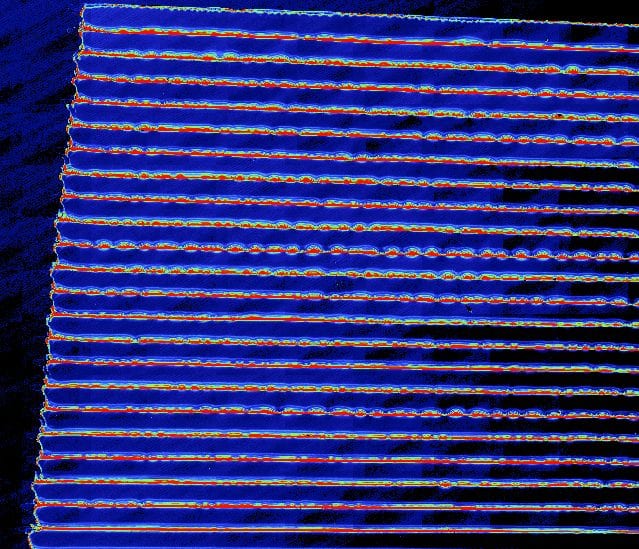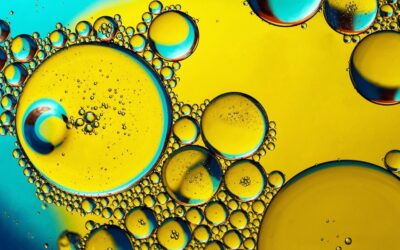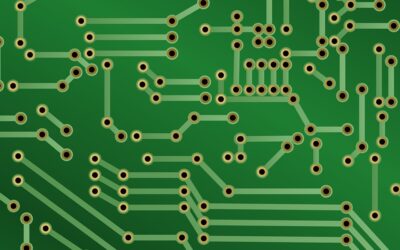Fan Zhang, Christopher Tuck, Richard Hague, Yinfeng He, Ehab Saleh, You Li, Craig Sturgess and Ricky Wildman present the first continuous fabrication of inkjet-printed polyimide films in the Journal of Applied Polymer Science. The films were then used as insulating layers in capacitors.
Polyimide films are traditionally fabricated by lithography, requiring the use of photoresist that makes fabrication a slow, costly process. Inkjet printing of films avoids some of the difficulties encountered with lithography. Zhang and co-workers printed room temperature poly(amic acid) on to a 160°C substrate to initialize a rapid thermal imidization, which formed the polyimide layer. A 1 wt% solution of poly(amic acid) in N-methylpyrrolidone was found to form the most stable droplets without damaging the print head. Each droplet affixed to the substrate within 16 milliseconds, while it took 1,400 milliseconds for the solvent to fully evaporate.
Smaller droplets could be formed by either decreasing the droplet velocity or increasing the substrate temperature. At higher velocities, the droplets impacted the substrate more strongly, leading the ink to spread across a larger area. Droplet spacing is also an important factor in optimizing the quality of printed lines or films. Closely spaced droplets formed thick lines due to overlapping droplets spreading over the substrate. Alternatively, droplets spaced far apart caused the line to be discontinuous.

Line formation for polyimide lines printed with different droplet spaings, viewed with optical microscopy.
Films were formed by rastering the printing head across the substrate. The “coffee ring effect” caused periodic ridges and crater-like formations in the films. The ridges were minimized by having the lines overlap by 30%.
Zhang and co-workers then printed polyimide films between two conducting layers to fabricate capacitors. The polyimide films were optimized by adjusting the substrate temperature, droplet spacing, droplet velocity and other printing parameters. Capacitors that were 10 mm × 10 mm in size with polyimide layers of less than 1 μm had high capacitance values of 2.82 ± 0.64 nF. This work shows that inkjet printing provides a versatile and efficient method for fabricating microelectronic devices.
















